|
This Ipswich race Savannah Sparrow was photographed on the recently concluded Barnegat Jetty IPT with the tripod-mounted Canon EF 800mm f/5.6L IS USM Autofocus lens, the Canon 1.4x EF Extender III (teleconverter), and the Canon EOS-1D X digital SLR . ISO 400. Evaluative metering +1/3 stop: 1/400 sec. at f/10 in Manual mode. Central sensor (by necessity)/AI Servo Expand/Rear Focus AF on the center of the bird’s breast active at the moment of exposure. (Cropped from a horizontal original.) Click here if you missed the Rear Focus Tutorial. Click on the image to see a larger version. Eager to get a frame of this hard to find, hard to photograph race of Savannah Sparrow, I stopped down 2/3 stop to f/10 and was happy to get the AF sensor anywhere on this fidgety subject. The bird posed spraddle-legged for about two one-hundredth of a second. I made three images, all sharp, and all with a less-than-ideal head angle. Seeing just a sliver of the bird’s right eye really bugs me. Staring either right or left of right down the lens barrel would have been great but it is what is way. 🙂 The head angle above is neither here nor there…. Even 45 degrees would have been a huge improvement. Note that this bird was on the jetty and I was off the jetty. A big lens with a teleconverter brought the relatively small subject within range even though I was using a full frame camera body. |
Why the Biggest Gun?
While commenting on the Barnegat Miracle blog post, Quazi Ahmed Hussain asked, “Artie, most of the time u r using ur biggest gun, the 800mm, and sometimes with extenders. Are the birds you photograph always far away from u? So far as we know, in your region getting close to the birds is not very difficult. So, do u mind letting us know the reason? Thanks in advance. Quazi
My Reply
That is a good question Quazi. Thanks for asking it and inspiring this blog post.
First off, while the birds in Florida are often very tame, the birds in New Jersey are–like the sparrow in the image above–typically quite skittish. Now on to the question, “Why am I almost always using my longest lens?” There are many, many good answers to that question so here goes.
1-Most recently I have gone to full frame camera bodies, two EOS-1D X bodies and one EOS-5D Mark III. With a full frame body and the 800 lens my effective focal length is 800mm. Someone with a 500mm lens, a 1.4X TC, and a Mark IV (with its 1.3X crop factor) actually has me out-gunned 910mm to 800mm.
|
This head portrait of a flapping Brant was created on the recently concluded Barnegat Jetty IPT with the tripod-mounted Canon EF 800mm f/5.6L IS USM Autofocus lens, the Canon 1.4x EF Extender III (teleconverter), and the Canon EOS-1D X digital SLR . ISO 800. Evaluative metering +1 1/3 stops: 1/320 sec. at f/11 in Manual mode. Central sensor (by necessity)/AI Servo Expand/Rear Focus AF on the center of the bird’s face active at the moment of exposure. Click here if you missed the Rear Focus Tutorial. Click on the image to see a larger version. I was a bit lucky here on two counts: 1-I was able to keep the sensor on the bird’s face and maintain accurate focus even though the bird was flapping. 2-the resulting image was sharp at 1/320 sec., a relatively slow shutter speed for a moving subject. I did employ some excellent stalking techniques to get close to this usually shy species. |
2-Long focal lengths fit my style–tight and graphic with clean backgrounds. With tame birds, a long lens gives me the ability to to create head portraits (see the Brant image immediately above_ and tight body parts close-ups. In addition, with their narrow angles of view, long lenses do a great job of eliminating background clutter and using them at wide apertures softens those clean backgrounds up rather nicely.
|
This Common Loon with a crab was also photographed on the just-concluded Barnegat Jetty IPT. I used the tripod-mounted Canon EF 800mm f/5.6L IS USM Autofocus lens and the Canon EOS-1D X digital SLR . ISO 800. Evaluative metering +1 stop: 1/640 sec. at f/7.1 in Manual mode. Central sensor/AI Servo Surround/Rear Focus AF active at the moment of exposure. Click here if you missed the Rear Focus Tutorial. Click on the image to enjoy a larger version. |
3-As above, long focal length lenses allow you to photograph interesting behaviors while minimizing or eliminating the risk of disturbing the bird and possibly causing it to lose a meal.
|
This swimming drake Harlequin Duck image was created at the Barnegat Jetty with the tripod-mounted Canon EF 800mm f/5.6L IS USM Autofocus lens and the Canon EOS-1D X digital SLR . ISO 1600. Evaluative metering +1/3 stop: 1/500 sec. at f/9 in Manual mode. One row down and two to the right of the central sensor/AI Servo Surround/Rear Focus AF active at the moment of exposure. Click here if you missed the Rear Focus Tutorial. Click on the image to enjoy a larger version. |
4-Working with long lenses reduces the angle of declination when photographing birds below your position and reduces the angle of inclination when photographing birds that are above you enabling you to create more intimate images than if you had been using a shorter effective focal length. Adding a TC to a long telephoto lens when appropriate–you will need to move back–heightens these effects. I was sitting on the jetty behind my lowered tripod for the image above but because I was using a long lens it looks as if I were just above the water level.
Small doses of NIK Color Efex Pro’s Tonal Contrast and Detail Extractor on the bird only using a Hide-All mask brought enhanced the plumage of the male duck immediately above. For my complete digital workflow, dozens of great Photoshop tips, all of my keyboard shortcuts, “Layer Masking for Dummies,” and NIK Color Efex Pro basics, get yourself a copy of our Digital Basics File, a PDF that is sent via e-mail. It will be the best $25 that you ever spent on photography.
NIK 15% Discount
On the Brant head portrait I used Color Efex Pro’s Tonal Contrast on the bird only and lightened the background using Control Point technology in Viveza. As regular readers know, Color Efex Pro has drastically changed my digital workflow and little by little I have begun using Viveza to solve sticky image optimization problems. You can save 15% on all NIK products (including Color Efex Pro, Silver Efex Pro, and Viveza) by clicking here and entering BAA in the Promo Code box at check-out. Then hit Apply to see your savings. You can download a trial copy that will work for 15 days and allow you to create full sized images.
|
This resting first winter Purple Sandpiper was photographed at the Barnegat Jetty IPT with the tripod-mounted Canon EF 800mm f/5.6L IS USM Autofocus lens, the Canon 1.4x EF Extender III (teleconverter), and the Canon EOS-1D X digital SLR . ISO 1600. Evaluative metering +1 stop: 1/40 sec. at f/10 in Manual mode. Central sensor (by necessity)/AI Servo Expand/Rear Focus AF on the bird’s eye and recompose. Click here if you missed the Rear Focus Tutorial. Click on the image to see a larger version. The 800 f/5.6L IS has 4-stop IS. This, plus excellent sharpness technique on my part, enabled me to create a sharp image practically in the dark at a shutter speed of 1/40 sec. To learn advanced sharpness techniques get yourself a copy of “The Art of Bird Photography II,” the all-new 916 page e-Book (on CD) that is the digital follow-up/continuation of the classic “The Art of Bird Photography.” |
Summing Up
The image above reinforces many of the principles outlined above: long lenses provide great magnification even with full frame camera bodies, they can be used with teleconverters to bring small shy subjects into range without disturbing them, and they offer low angles of inclination even when you are standing at full height as I was when I created the image above.
Thanks again Quazi for your excellent question. Do note that I am often afield with either the 300 f/2.8L IS lens or the 70-200 f/2.8L IS zoom lens either on my shoulder via a Black Rapid RS-7 Strap or in the large rear pocket of my Xtrahand vest. And most days I have the 24-105 in my vest as well. Very often, the 800 is not the best tool for the job at hand.
Your Favorite?
Which of the above images is your favorite? Be sure to let us know why you like your pick.
It is interesting to note that all of the images above were created on a single day, December 20, 2012.
Support the BAA Blog. Support the BAA Bulletins
We want and need to keep providing you with the latest free information, photography and Photoshop lessons, and all manner of related information. Show your appreciation by making your purchases immediately after clicking on any of the links above. Remember, B&H ain’t just photography!



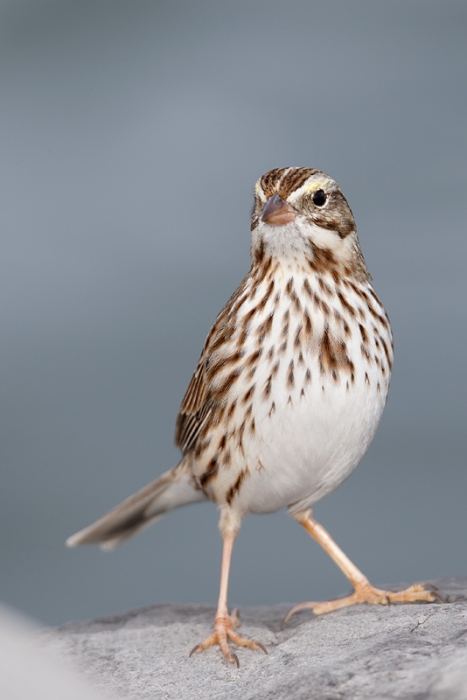
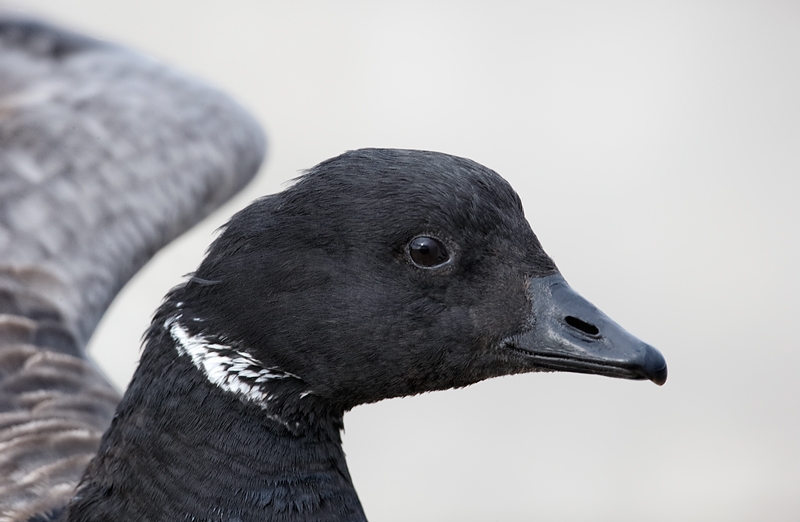
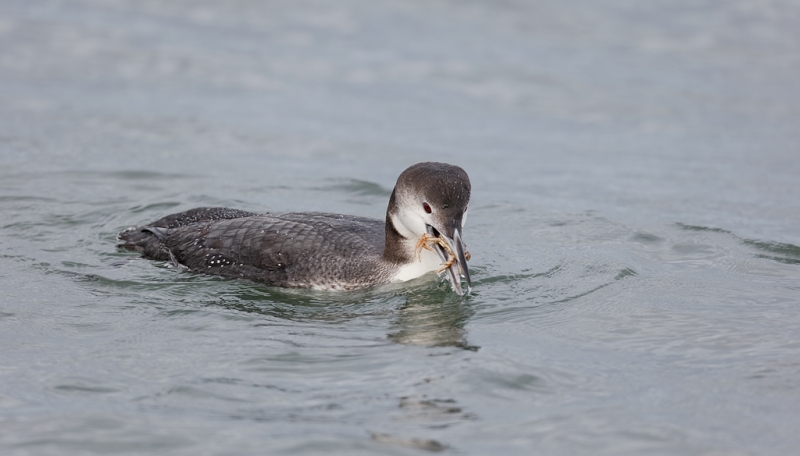
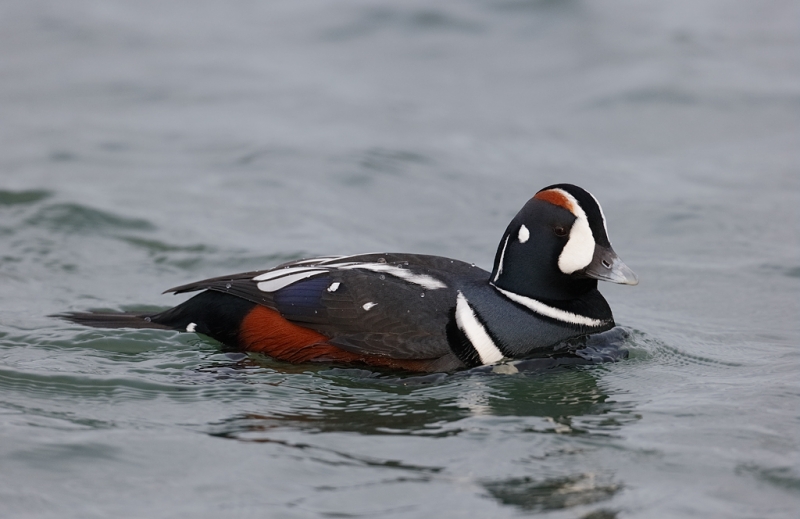
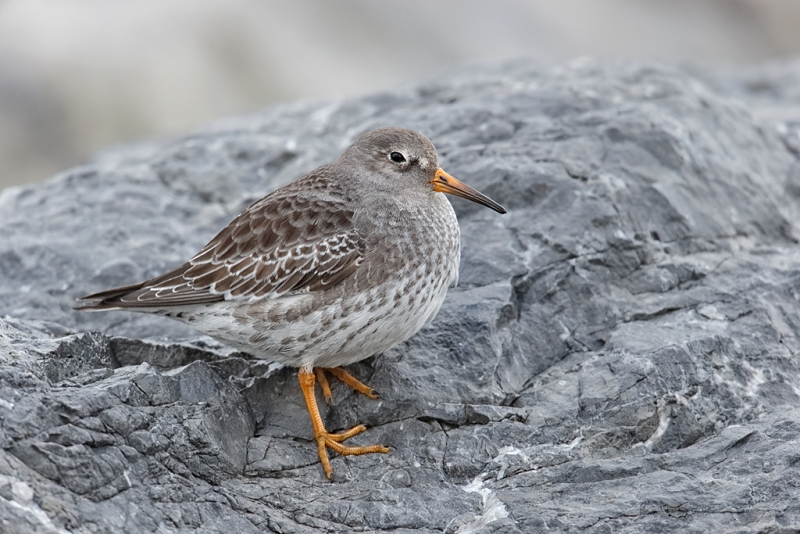













Thanks for your reply. I’m probably going to sell my 800mm and go with the 600mm. Canon’s move to full sensor only is moving me back to the film days in terms of lens selection. I had the 800mm FD and with film the extra magnification was appreciated. My memory is that the 600 FD was a weak link in their lineup or at least I never had one. The new 600 EF seems top drawer so…. I would like to know your thoughts or if you make a decision as you get far more field experience with these lenses in a week than I do in a year. At the end of the day, field experience is far more valuable than charts and laboratory reviews.
Not sure at present :). Have to check the finances….
Re: the background on the Brant and Sparrow photos looks mottled.
What causes this? Can you smooth out the background?
I see a very smooth mottling that is pleasant. It sounds as if you may be seeing posterization, possibly caused by your browser. Both images look fine from this end.
Love the lighting in the loon image. And of course the purple sandpiper – amazing that you made such a sharp image at that shutter speed.
Thanks again Faraaz for inspiring this post!
I really like the Purple Sandpiper.very nice comp and DOF is just right pulling you eyes right to the birds head(an advantage of the 800 a mentioned above).The color combo of the Sandpiper against the grey rocks is very pleasing to the eye and lets the legs and bill pop.
Many thanks. Everyone likes that one!
Arthur,the Black-bellied Plover is an adult, not a juvenile/first winter. Black-bellied retains its juvenile plumage through the first winter into spring, and shows dark centers to the uppperpart feathers with crisp white fringes. This recently molted adult shows uniform pale upperpart feathers with dark central shafts and no uniform dark centers. Also, the Savannah is not an Ipswich, which would show a very pale gray crown (not rusty) and a pale gray cheek. The underpart streaking on Ipswich is also grayer than this. This bird is one of the variants of the Eastern subspecies of Savannah. The photos are great, however, and I particularly love the shot of the breaking waves and blur. Truly artistic and very well done. You continue to produce fabulous work. All my best, Kevin
Thanks for stopping by Kevin. It is good to see you here. And thanks for the corrections :). And thanks for your kind words. The Black-bellied Plover you commented on is actually from another blog post, Barnegat Miracle, here.
Say “Hi” to Dale and you guys have a great 2013.
The last image of the Purple Sandpiper is my favorite. The gray chiseled rock captured my attention on first seeing the image. The birds not too bad either[smile]
I think the sharpness of the purple sandpiper is fitting. Head and eyes are the most inportant and the shallow DOF makes the head stand out from the rocky background that is OOF.
Great pictures, Artie!
Thanks Sue. Amazing on the PUSA at 1600 ISO!
Hi Arthur,
I like the Sparrow best, dodgy head angle and all! The composition and angle of capture are very pleasing – I like how it stands out against the out of focus harbour water. I also like it’s pose and the quality of light on the subject – almost as if fill flash was used.
Happy holidays, as you guys say! 🙂
Julian.
Thanks on all counts and ditto! Where are you from?
Hi Arthur,
I live in the UK – hence the ‘u’ in ‘harbour’! 😉
Thanks Bob and Artie, I do own a Canon Poweshot SX10IS and a Panasonic DMC-ZS20. Both of them have no RAW-mode. The Panasonic gives amazing results but has no viewfinder. I would like to contact Denise Ippolito, please mail me her e-mail address.
Thanks, Ruthie
For Ruth… Today’s models of digital compact (point and shoot) cameras are quite capable of doing some very nice work. I recommend the Canon Powershot G series (G12, G15), especially for wide (habitat) shots. Good quality, raw mode, and they pack flatter than the following models. The Canon Powershot SX series (SX40, SX550) have incredible zoom ranges and good image quality, however they have no raw mode, plus they are large and have a snout, making them less than ideal for packing and carrying in a case. As an entomologist/botanist and 99%-of-the-time macro shooter, I’ve yet to find a compact that can do worthwhile close-ups (some produce web-quality close-up images but none produce print-quality close-ups).
(Friends, this is a bit off-topic, but it was approved by Artie before I posted). -Bob
Thanks Bug Bob!
I like the Brandt. He obviously enjoyed posing as he smiled at Artie 🙂
The sharpness of the head while it was moving is a tribute to your skill.
Thanks Jeff. That and luck 🙂 I have tried and failed many times in similar situations. But if anything, I am persistent.
Hi Artie,
Awesome images and info, as always! I especially like the image of the common loon eating a crab – images of natural history and behavior are always my favorites. The purple sandpiper was shot at 1/40 f/10 and is still that sharp? You are indeed the bird whisperer ;7)
-Bob Allen, Mission Viejo, CA
Thanks Bug Bob 🙂
I see that this was twas the wrong forum to ask my question, and I apologize.
Ruth Schueler
Forgot to mention, I’ve started using rear-focus on my 50D after reading your tutorial on it last week.
Good luck. It takes a while to get used to and you need to stick with it to reap the benefits.
First of all, my profound gratitude to you Arthur for addressing my query with a new thread – I feel honored.
Secondly, I’m now fully convinced as to why you have been using your biggest gun in such cases. So far I remember somewhere you expressed your willingness to part with 800mm when the new 600mm IS II arrives. Probably then you’ll use it full time with extenders mounted on your 1D Mk IV for such shots.
Thirdly, the image I like most is that of Purple Sandpiper as you dared shoot it at f/10 with a shutter speed of 1/40 sec only which could have blurred it out easily. On the contrary it’s a clear and sharp image. The post-processing was superb.
Last but not least important; I express my frustration with Canon that forced a photographer like you go full-frame. The engineers at Canon are clearly overpowered by the marketing team for making high megapixel crop bodies that are useless for pros like you. Have been hearing they won’t make any more good 1.3 pro bodies but next 1.6 crop bodies will be packing even more pixel density than 7D making them noise champions. This makes me contemplate going full frame for future replacements. That will be a setback as with my prosumer 400mm prime; I stay at 400mm. But Canon will be selling those crop bodies in large numbers to new entrants as they are allured by high pixel counts. Bravo Canon.
Thanks again Artie.
🙂
I will likely have a 600 II soon. See my comments to Nick below on that.
I have gone 100% to full frame capture: two 1D X bodies and one 5D III. I will be selling my last 1D IV soon. I am actually glad that Canon did what they did as the AF systems in the two new cameras are superb and so are the files.
Good morning Arthur. Hope you are fine.
BTW, what combo do you use for hand-held flight shots?
Artie, I still prefer the purple sandpiper, lovely image, thanks MJ
Art, Minor comment to the Loon photo, that bird is a Red-throated Loon from the Arctic not a Common Loon. I have been photographing these and many Hooded Mergansers on the LI Sound for a couple of weeks. Nonetheless, excellent photo. Don
Don, I don’t mind being wrong when I am wrong but in this case you are wrong. The jagged white mark on the neck, the dark culmen, and the large bill (as seen clearly in other images of the same bird after swallowing the crab), are all consistent with Common Loon not red-throated. You were tricked by the open bill and the fore-shortened view. artie
Greetings Artie!
Your note that ” Someone with a 500mm lens, a 1.4X TC, and a Mark IV (with its 1.3X crop factor) actually has me out-gunned 910mm to 800mm. ” may mislead some to think that they are getting greater magnification using the smaller sensor. As you state it is a “crop factor”, so though it crops like a 910mm lens the actual magnification is still that of the 500mm lens plus 1.4 extender.
Wishing you a Happy & Successful 2013
That has always been a matter of semantics to me…. As far as I can figure, they have me out-gunned. The bird is bigger in their frame than in mine :).
Not to “bug” you on this but I think this is an important point for what people can expect from a lens. The bird is actually larger on your sensor with the 800mm. With the 500mm image on a mk IV sensor you’re getting a smaller bird that has been cropped so it does take up more of the frame but is indeed a smaller bird until you enlarge that frame to the size of the the 1DX but that is nothing other than a digital enlargement with less resolution and not a true optical enlargement.
If you look at a bird with 8x binoculars you get a larger bird than if you look at a bird with 5x binoculars. If the 5x pair of binoculars has a smaller field of view it may have the appearance of being larger but is indeed smaller and therefore has less resolution.
I hate to bug you on this but when I am standing next to someone with a 1D IV, a 1.4X, and a 500 lens and we both press the button the bird will be larger in their image than it is in mine. I am not talking pixel math. As I said, it’s a matter of semantics.
Artie, I know that the looong 800mm lens has a shallow depth of field, but how do you decide on the aperture for a close up of a single bird like those above? I know you are in manual mode and the aperture coincides with the shutter speed, but these photos were f/10, f/11, f7.1, f/9, and f/10. How did you decide to go from f/ll to f/7.1 for DOF of a single bird?
In general, the closer you are to the bird the greater the need for more d-o-f. But there are tons of other factors involved. See the BPN discussion here especially my comments in Pane #7. artie
Hi Artie
I was curious to whether you would be changing over to the 600mm f4 II with the x2 III Extender as you big gun in the near future or are you sticking with your faithfull old 800mm with x1.4
Thanks Nick
I likely will…. Maybe. 🙂 The 600 is certainly more versatile. It is 1.21 pounds lighter. It focuses a whopping 4.91 feet closer. And if offers a greater effective focal length than the 800: 1200 at /8 with the 2X vs. 1120 at f/8 with the 1.4X. So yeah, and probably soon :).
Artie
Have you updated Digital Basics? If so I did not receive an updated copy
Happy Holidays
Myer
Please e-mail Jim at staffbaa@att.net and include some sort of proof of purchase. The last update was not long ago.
Does this mean that you will not be shifting to the 600mm? The 600 will of course give you 600mm, 840mm, as well as 1200mm at f8. A little lighter too. Maybe not as sharp at 1200 as the 800mm lens is at 1120.
Honestly don’t know. artie
Dear Artie,
For many years I have been one of your subscribers, and I have learned a lot from you. I myself use a Canon Eos 40D with a 100-400 Canon zoom lens with mixed results.
I would like to ask you if you could recommend a really good point-and-shoot camera for people who for many reasons are not able to acquire and carry all this heavy equipment.
I wish you and your team a Happy New Year
Ruth Schueler, Jerusalem
I’d be glad to answer but I do not even own a point and shoot. Try e-mailing Denise Ippolito.